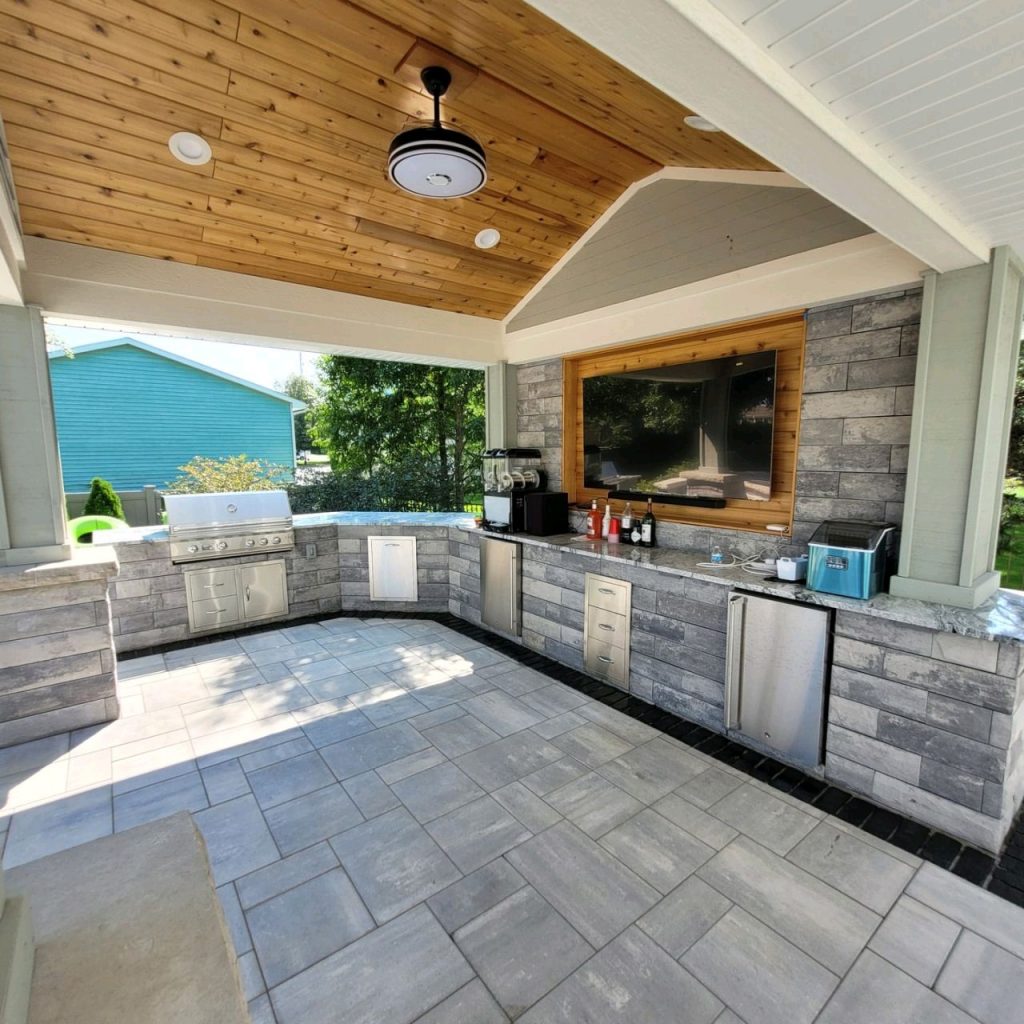Imagine having the ability to prepare all your meals from the comfort of your own backyard, without ever needing to run inside for ingredients, utensils, or a random spice.
Sound too good to be true? It’s possible with an outdoor kitchen!
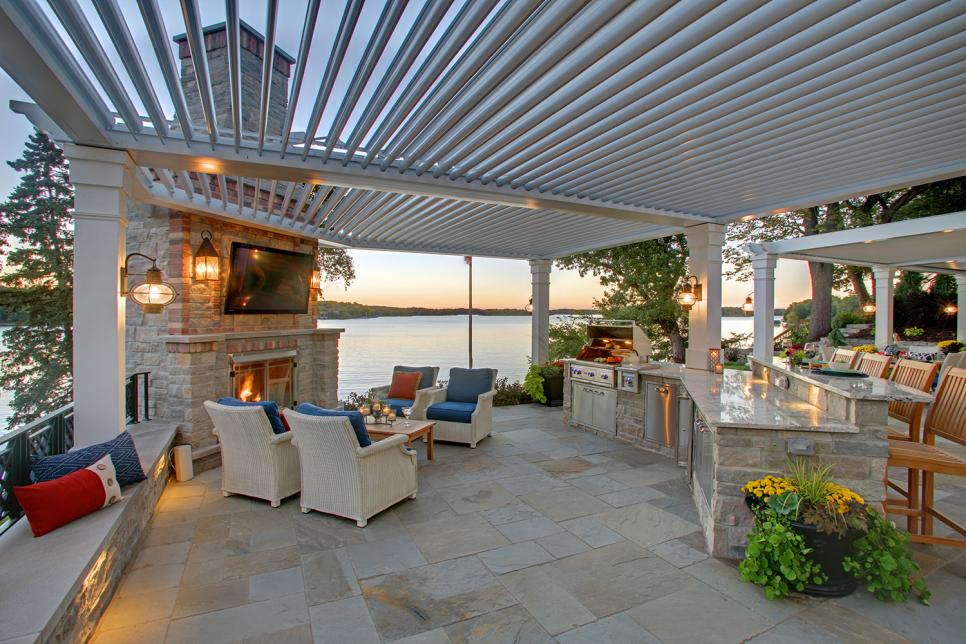
Outdoor kitchens are becoming more popular among homeowners, and it’s easy to see why. They turn your home into a hospitality hub, offering an al fresco dining experience usually reserved for high-end restaurants.
With an outdoor kitchen, your home also gains extra square footage, without an expensive build-out or time-consuming renovation. In today’s competitive real estate market, that’s a huge advantage.
Before you start building your outdoor kitchen, there are six important things you should consider. To make your project easier, we’ve put together a guide that outlines each decision you’ll need to make. But remember, our team of experts is always available to answer any additional questions you may have and help you choose the right components for your outdoor kitchen!
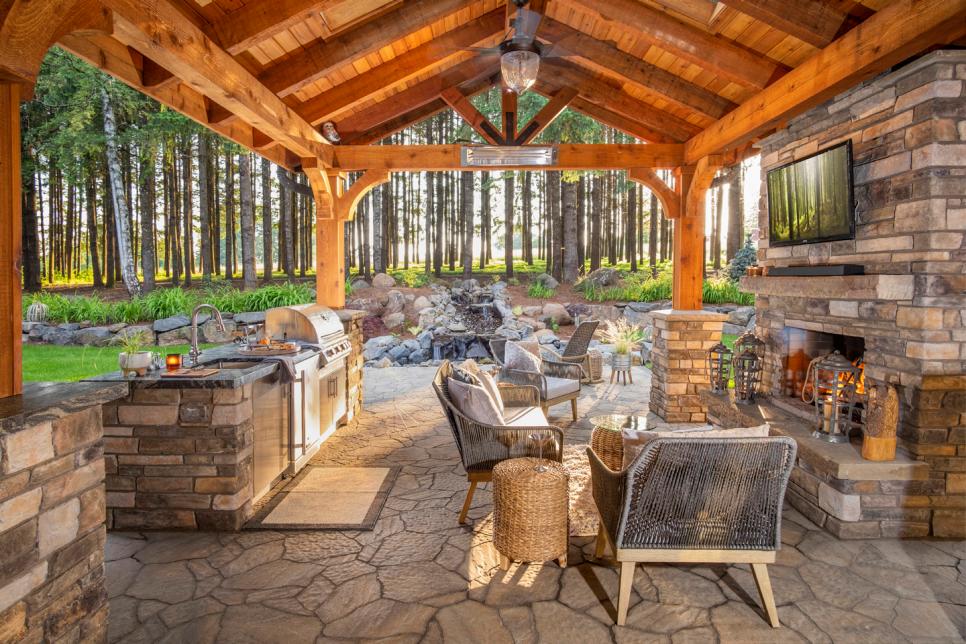
1. TYPE OF BUILD
A custom-built outdoor kitchen offers almost limitless options, making it the premiere choice for customers who want to customize the size, shape, and finish of their outdoor kitchen layout.
With a custom-built kitchen, you’ll get to hand-pick all your components and appliances, right down to the type of granite or stone you’d like for the countertop.
Custom build types depend on your budget and the look you’re going for. Here are the five types available:
A. Stacked Manufactured Block (on gravel base). This is the most affordable. This type of construction uses manufactured concrete block such as Unilock’s Lineo, Oak’s Laredo Smooth, Fendt’s Glenstone or Techo-Bloc’s Brandon wall units that are stacked and glued (using construction adhesive). $
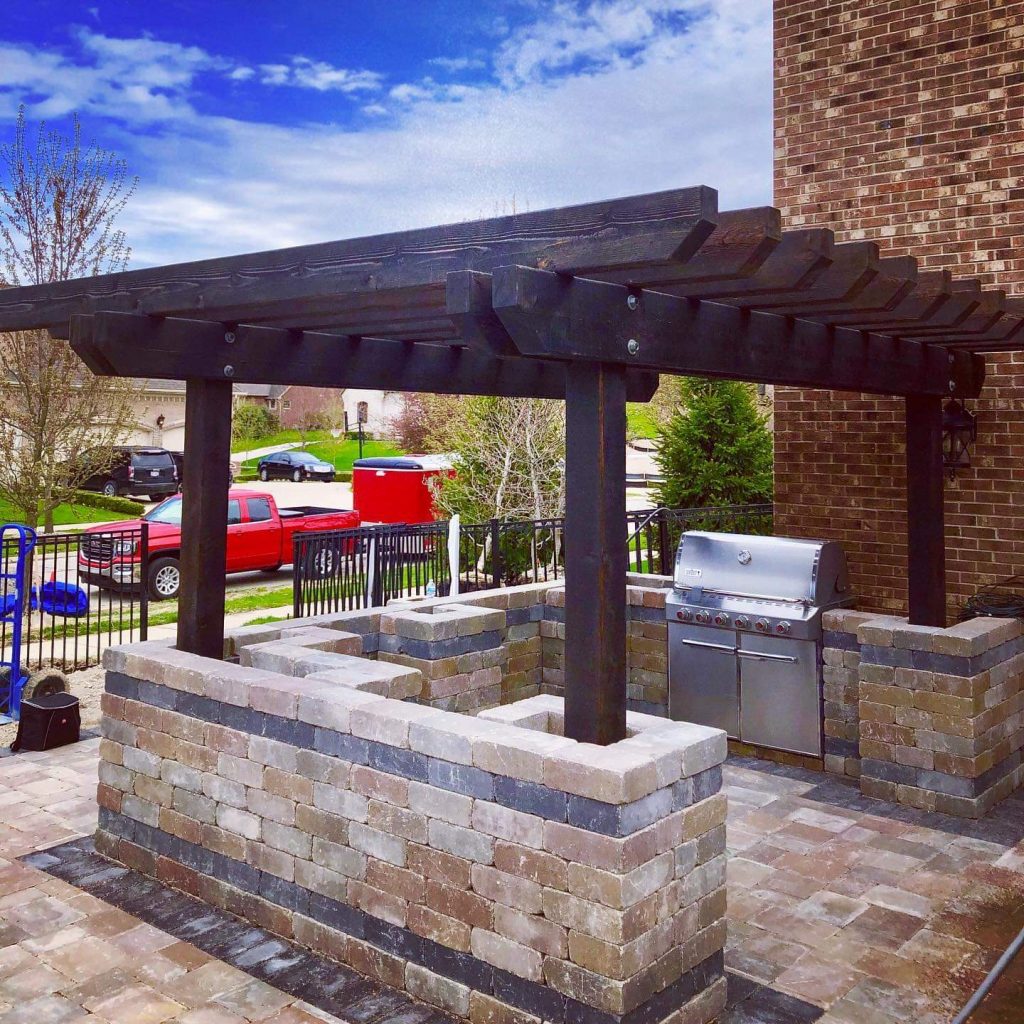
B. Metal-Frame Kits – A popular option for outdoor kitchen construction is a steel frame. Aluminum-frames are heat and weather resistant and very sturdy. You can purchase aluminum frame kits designed specifically for outdoor kitchens. The frames come in a variety of configurations and can support a range of appliances and accessories. Cement backer board is used to skin the structure and then the walls can be stuccoed, stone-clad or tiled. OR…. Unilock offers U-Cara Modular units are aluminum-framed cabinets that are a labor saving and cost-effective way of constructing a number of different outdoor features. These cabinets can be built on-site in hours, not days, and because they are light, they can be placed almost anywhere on your patio. The Sure Track Backer Block System on the other hand, allows for easy single or double-sided seat wall designs and easily connects to the modular system. Clad backer blocks with the same decorative fascia panels, for a cohesive design. $$
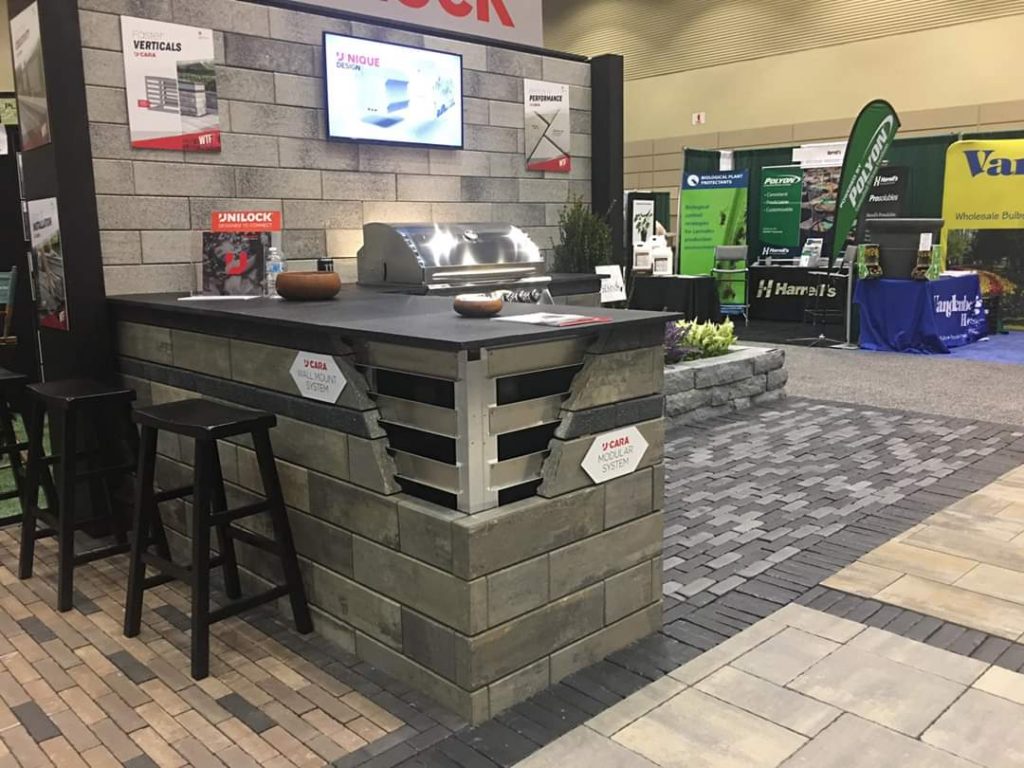
C. GFCR Cabinets – Glass-fiber rienforced concrete pre-fab cabinets can be installed on any solid flooring surface without concrete footings or rebar. They eliminate construction waste and reduce additional time associated with traditional masonry block installation. Outdoor cabinets can be assembled in just hours; even cut-outs for custom features such as barbecues, sinks, drawers, and burners can be done on-site. These CFCR cabinets can be finished with stucco, stone-clad or tile. $$
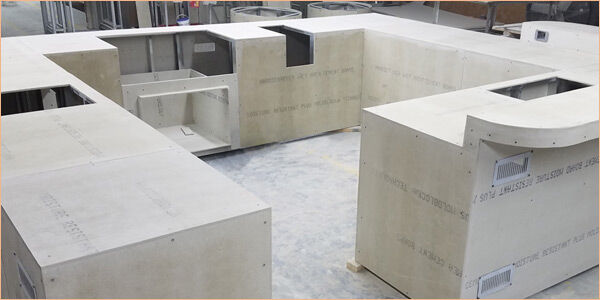
D. Block and Brick (or stone) – A common option is to build your outdoor kitchen out of concrete block. A concrete block structure must be built on a 42” deep concrete footing. Concrete block construction allows for complete customization. You will be able to configure your kitchen any way you like and include as few, or as many, appliances and accessories as you wish.. Decorative concrete panels, stucco, tile, brick and stone are all suitable facing materials for an outdoor kitchen constructed with concrete block. $$$
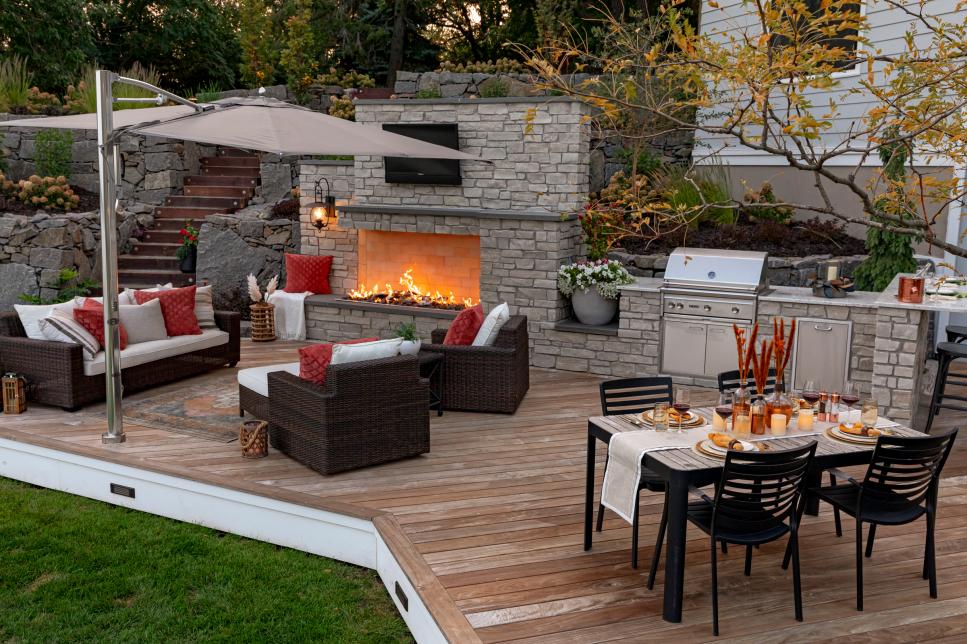
E. Stainless Steel Cabinets – there are several manufacturers such as Danver that offer stainless steel cabinets in either exposed or with a powder coat finish to compare to any interior cabinet. These offer the most flexibility and storage needs but at a cost. $$$$
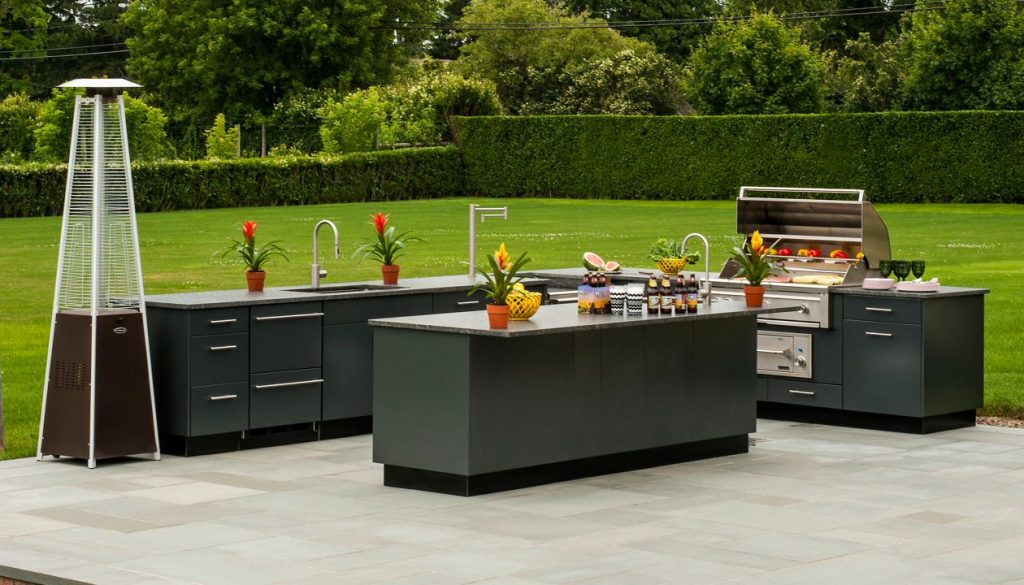
2. APPLIANCES
Every outdoor kitchen island needs a grill, but if you have the space, you may also want to include a refrigerator, sink, and extra storage space.
You can also add side burners, a bar, or a beverage center if you plan on hosting large backyard gatherings.
A common mistake that many homeowners make is not including enough storage space in their outdoor kitchen islands.
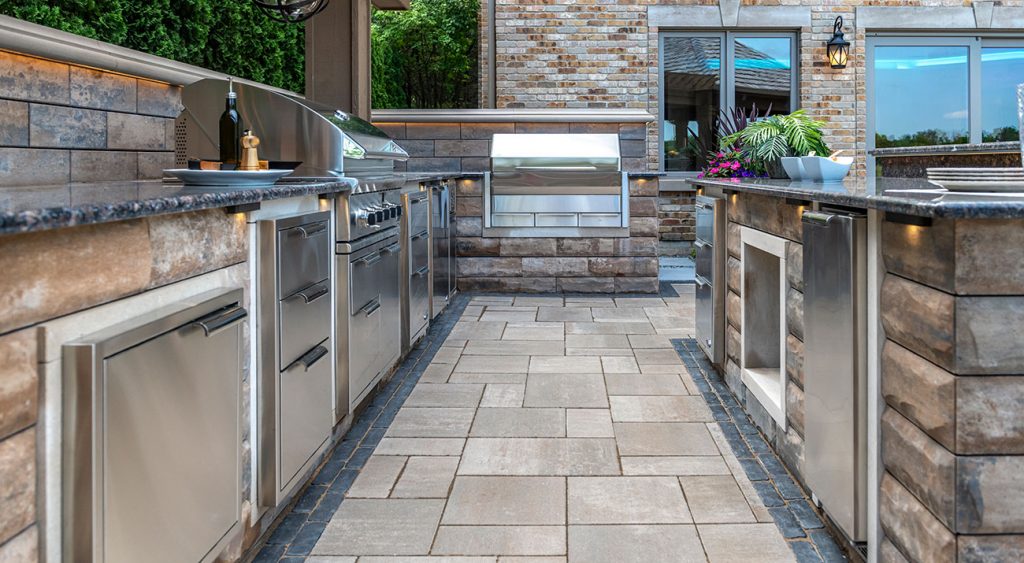
If you want the option to cook all your meals outside, without making frequent trips into the house, you’ll need ample space for utensils, glasses, plates, pots, pans, spices, and more. You’ll also need to include cold storage for your meats, vegetables, fruit, and other perishable foods.
Appliances are the most important part of your outdoor kitchen. We recommend choosing high-quality, rust-resistant components made of stainless steel, so you can enjoy your outdoor kitchen for many years to come.
Any appliance you purchase for your outdoor kitchen must be outdoor rated to ensure it will withstand the elements and function properly. For example, a non-outdoor-rated refrigerator may not be able to stay cold enough as it sits outside, leading to spoiled food and health risks.
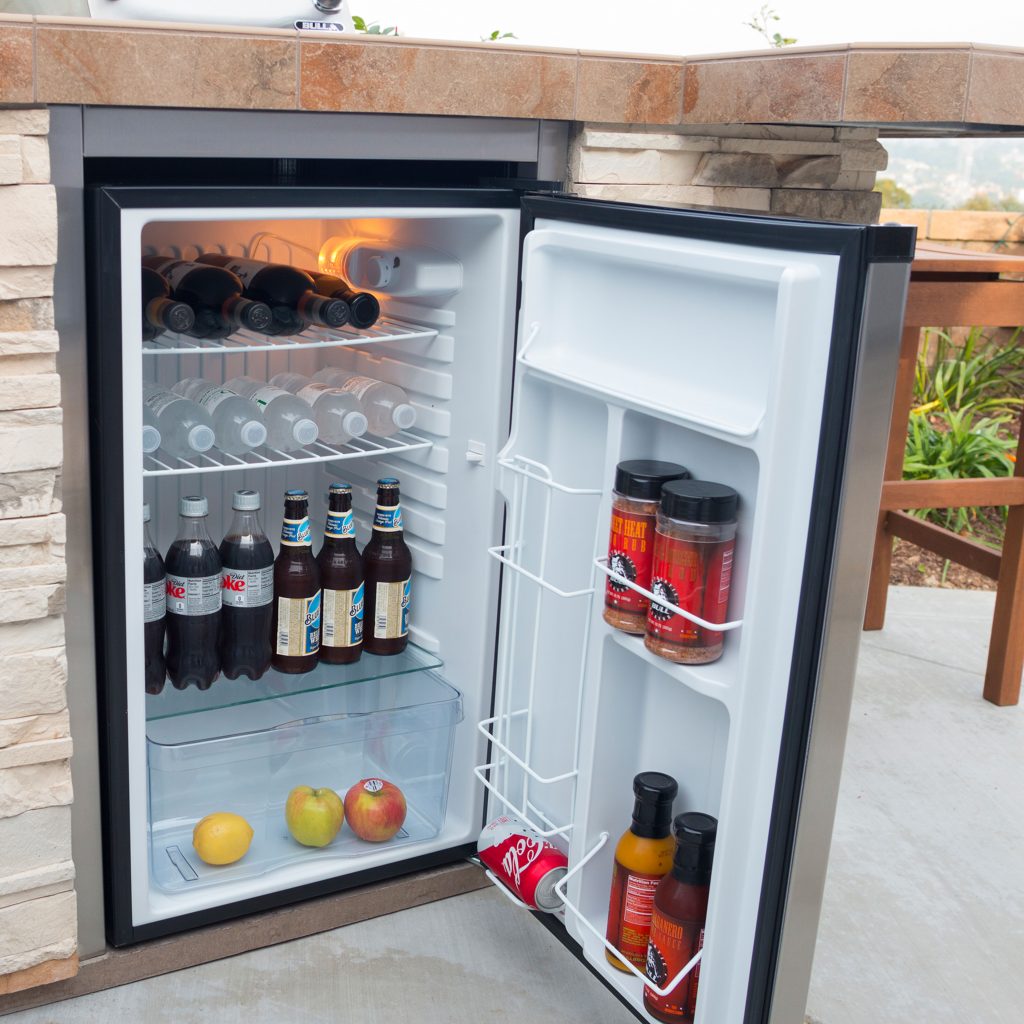
It’s important to check the manufacturer’s requirements outlined in the manual that comes with your appliances, as some products may include “outdoor” in the name but aren’t rated for outdoor use.
For help choosing the best grill for your outdoor kitchen, read our grill buying guide.
3. LAYOUT
When we design your outdoor kitchen, we plan your cooking, sitting, and activity areas at the same time. This ensures that all the main areas of your backyard mesh to create a cohesive entertainment space.
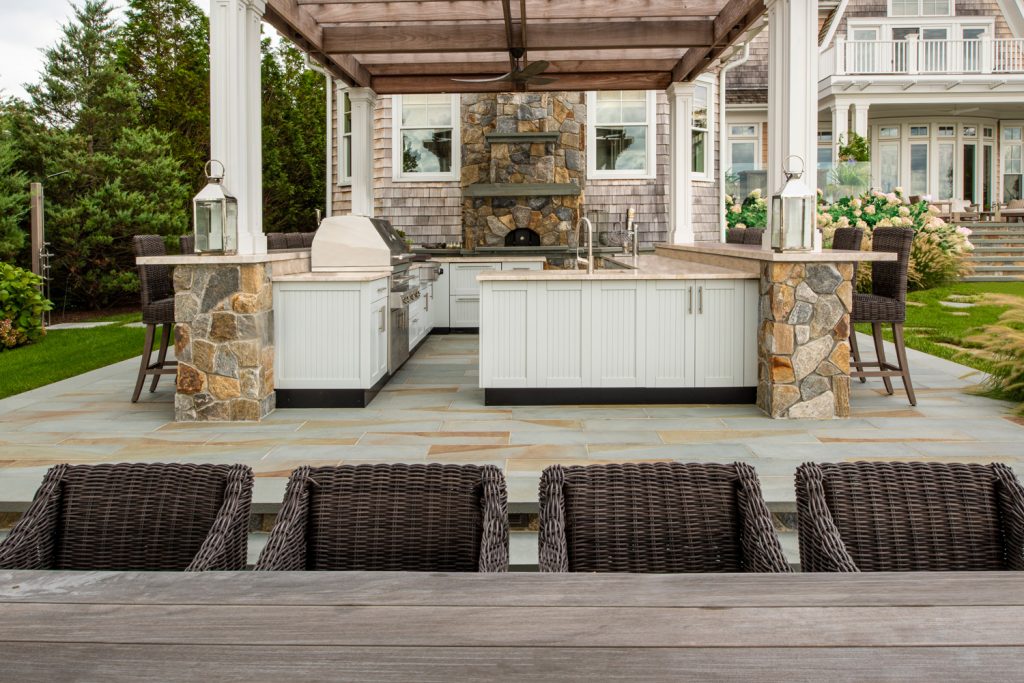
Keep in mind that safety regulations require at least 8 inches of space between any installed appliances to prevent them from overheating. This will affect the amount of space your outdoor kitchen will require, so you’ll want to plan out the number of appliances to include based on the amount of space you can use.
Your outdoor kitchen should also include proper ventilation. You’ll want to incorporate vents placed 4-6 feet apart along the bottom of your kitchen island to accommodate sufficient cross-ventilation. Without vents, gas can build up in your outdoor kitchen, which may result in an uncontrollable fire or an explosion.
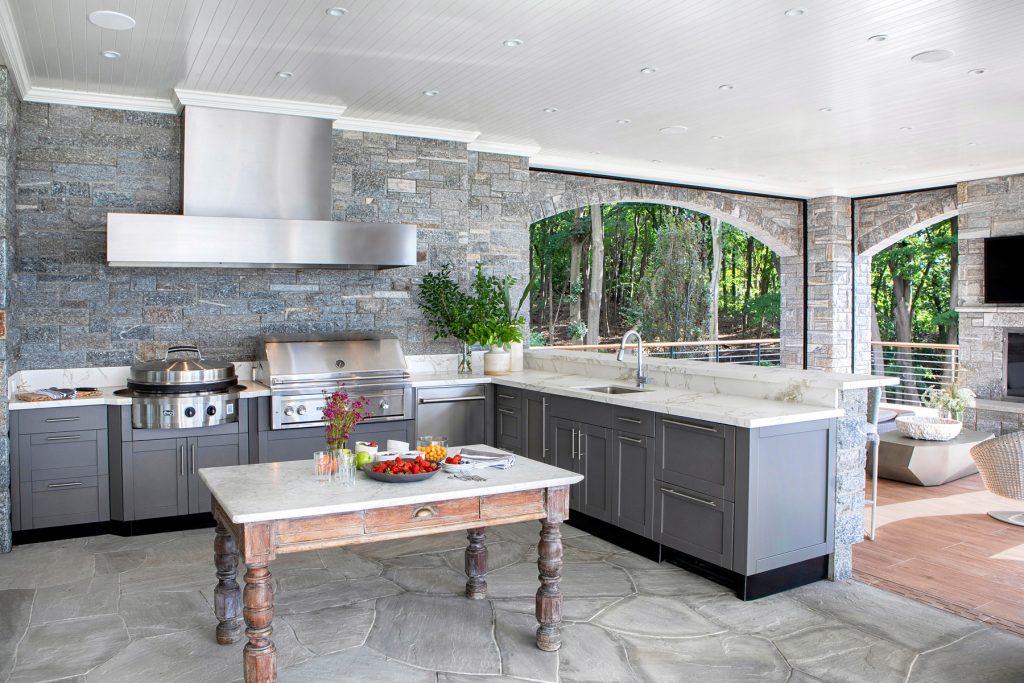
You never know when your outdoor kitchen might need maintenance. We make sure you have service doors for easy access to your appliances. Service doors are also handy for built-in grills, because you’ll be able to store your Propane tank out of view underneath the grill head.
4. LOCATION
Before you can install an outdoor kitchen island on your property, we’ll need to check your local city ordinances. These regulations specify how far away the island should be from combustible materials.
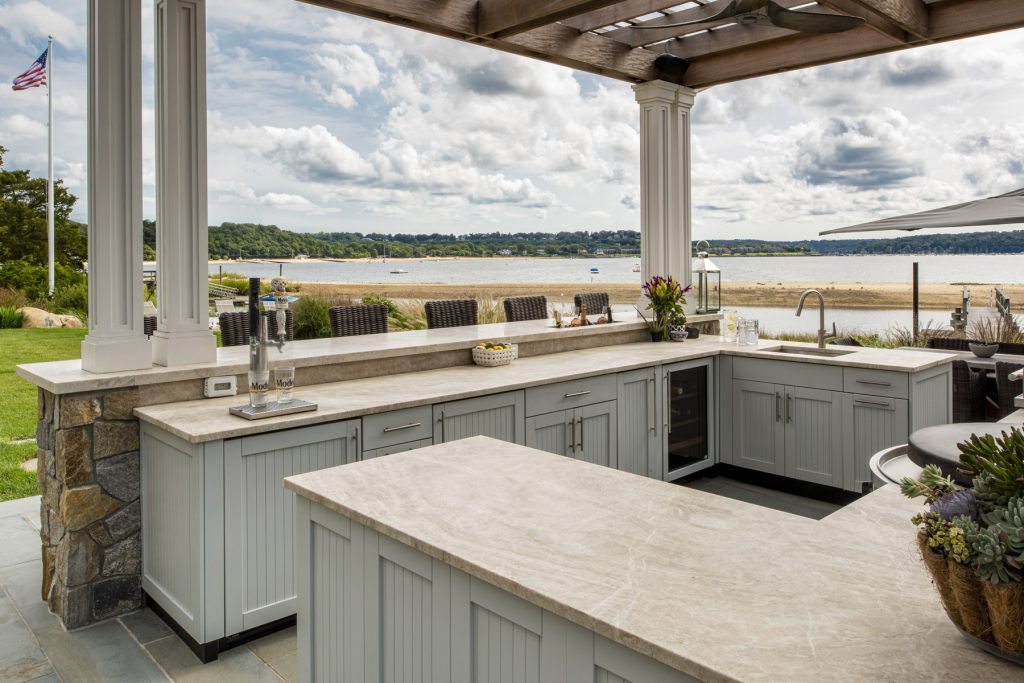
When determining your final location, consider the foot traffic in your outdoor space. Is your backyard usually busy? Are there certain areas of your yard that are typically more occupied than others?
While your outdoor kitchen certainly serves as a focal point, you don’t want the placement to impede regular backyard activities.
Outdoor kitchen islands also cannot be installed underneath a covered patio without a vent hood for your grill, and never in an enclosed patio.
5. COUNTER TOPS
There are several options for counter tops which include: concrete and natural stones (granite, limestone, soapstone, marble and quartz)
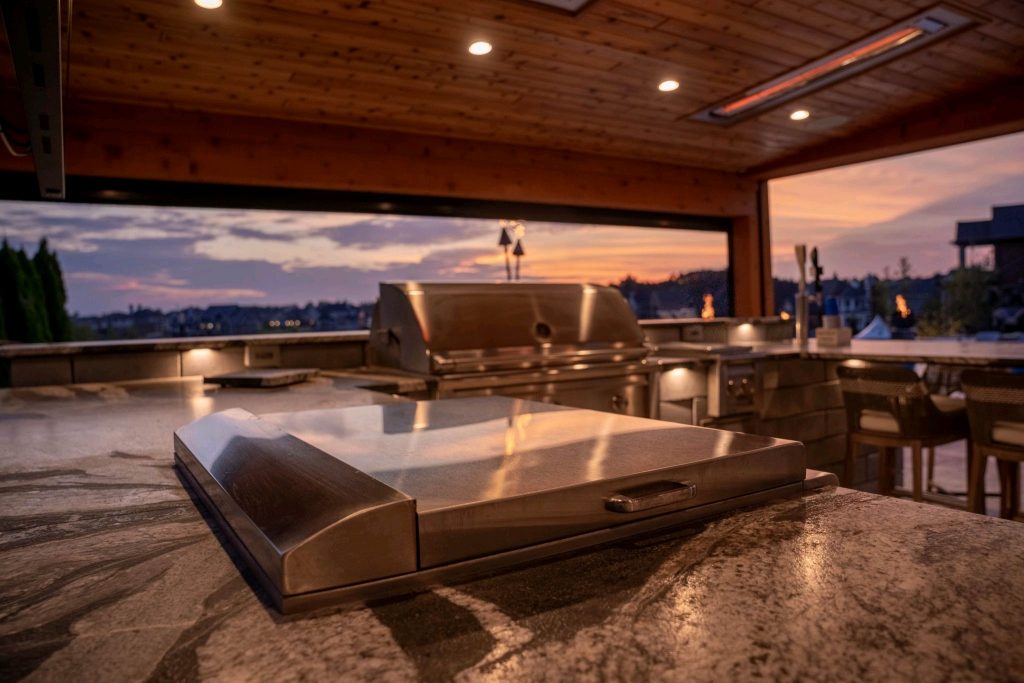
6. SAFETY & CARE
Whenever you’re not using your grill, protect it with a fitted, weatherproof cover. You may also want to cover your entire kitchen island. If so, custom covers can be found at your local awning or outdoor fabric supply store that stretch around the entire perimeter of your kitchen island.
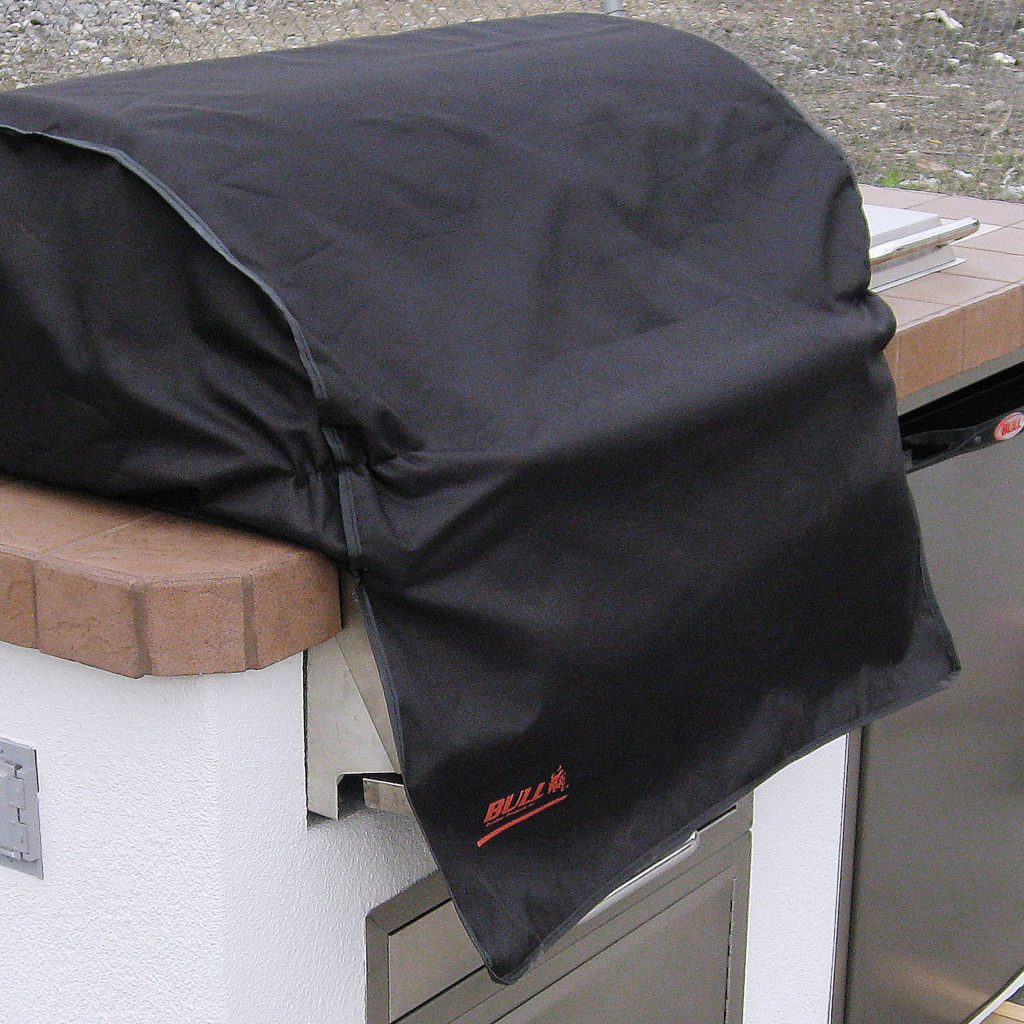
When the season ends and you’ve enjoyed your last meal outside, it’s essential to winterize your outdoor kitchen.
Bring your outdoor refrigerator into the garage, cover your grill for the last time, turn off your gas and water supply, and clear your gas lines. Taking these steps will help prevent any potential damage brought on by cold, harsh weather.
